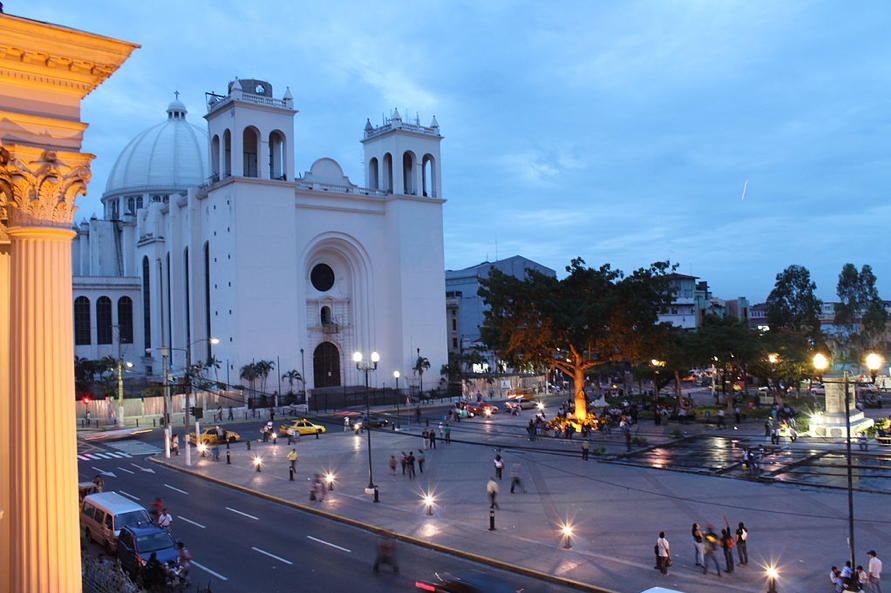It’s Not That Everything in Central America Is Cheaper. It’s That Everything in The U.S.A. Is So Much More Expensive.
In a society governed passively by free markets and free elections, organized greed always defeats disorganized democracy.
― Matt Taibbi Griftopia: Bubble Machines, Vampire Squids, and the Long Con That Is Breaking America
Although this article is labelled under the Explore El Salvador section, the topic of understanding costs/pricing can apply to all of the Northern Triangle countries including Guatemala and Honduras. In retrospect, it can probably apply most anywhere else in the world, although my primary focus is those countries in the Northern Triangle.
 Aside from countries that are populated into the worldly G-7 designation, most of the remaining countries of the world lie in the financial spectrum of emerging incomes and/or middle-income wages. Absent those seven countries, real world wages are abysmally low but they reflect the demographics of those who live in the country they were born.
Aside from countries that are populated into the worldly G-7 designation, most of the remaining countries of the world lie in the financial spectrum of emerging incomes and/or middle-income wages. Absent those seven countries, real world wages are abysmally low but they reflect the demographics of those who live in the country they were born.
What this means, is that one who is afforded the privilege to travel to other countries outside the G-7 designation will quickly make the initial first impression of how less expensive and ‘cheaper’ (relatively speaking) hotels, food, spending, etc.) can be if one plans accordingly. In hindsight, when comparing items that travelers typically assign themselves (i.e., hotels, packaged tours, food consumption/spending, souvenirs), it isn’t a stretch to conclude that in a market force economy such as the United States, similar items in the USA are simply downright expensive.
Contrasting with same-same purchases in the Northern Triangle, the economy exudes, dare I say, less of an emphasis than that of the United States with regards to “…what the market will bear…” A profit nonetheless is necessary, but the reduced notion and absence of exceptional greed is something that I find is a very appealing trait in many countries around the world and certainly in Central America, notwithstanding common corruption.
Many corporations employ algorithms, seasonal calendars, international flight/passenger capacity trends, etc., to arrive at a price for either an airplane ticket or hotel offering to be posted. Dynamic pricing principles are certainly at work 24/7, something that is less stringent in Central America, a deeply religious, conservative and welcoming region of the world.
The simple cost of flying from point A to point B in the United States of America and in the European Union are based on squeezing the maximum price out of a seat, based on passenger-per-mile cost. Often, it is less expensive to fly from Seattle, USA to Guatemala City or San Salvador, than it is to fly from Seattle to Palm Springs, California. Gone are the days of factoring in distance-per-mile cost. Two different airline corporations, each purchasing the exact same brand-new Airbus or Boeing 150-seater will pay a price within a few percentage point differences (the difference being the maintenance package, pilot training and other negotiables).
These two airlines will have markedly different pricing formulas for the same 500-1000 mile completed trip, one way. Taking into such factors as regulatory mandates, employee wages, maintenance, port and landing fees, etc., there is a mark-up cost that is significantly higher in cost structure associated with domestic flying in the European Union or the United States that doesn’t necessarily exist elsewhere, especially in the Northern Triangle.
There isn’t necessarily an ‘ah-hah’ moment that captures the variables of pricing discrepancies that exists when comparing markets, especially between that of the United States of America and countries in the Northern Triangle. For example, retail gas prices between the countries are remarkably similar, yet for the average tourist desiring a car rental, the cost is nearly half its American counterparts. Same can be said for hotels, restaurants, etc. There is a significant wage discrepancy, much more pronounced in Central America, but increasingly growing at an alarming rate in the United States. For those who are employed in Central America, anecdotal evidence appears to indicate that in metropolitan cities, the opportunities to get ahead financially are prevalent.
What does need to be emphasized is the lack of recourse if something goes awry. There isn’t an international Better Business Bureau kind of facility to air grievances and seek resolution. The laws of the U.S.A. remain in the U.S.A. Embassies generally frown on petty circumstances. In addition, there is a significant amount of corrupt behaviors that has permeated all aspects of society, right down to the concept of bartering, which is prevalent in so many parts of the world. Fortunately, with the advent of smartphone apps, one can get real-time information available at a touch of the button and make informed decisions.
The Salvadoran currency used the Colon from 1892 until around 2001 and then incorporated the United States Dollar. The USD is used freely in addition to the newly, fledging concept of cryptocurrencies. The effect of cryptocurrencies on a national stage (in this case, El Salvador) remains to be seen). North and West of El Salvador is the Guatemalan currency named after the national bird, the Quetzal. Some places inside the capital city (Guatemala City) will use the USD and will print on the receipt the exchange rate; it is best to use the Quetzal in all transactions when a debit/credit card will not suffice.
In my visits to Guatemala, my experience has taught me that when exchanging USD in Guatemala, it is best to use large denominations, fresh and crisp with the hallmark branding embedded to reduce counterfeiting opportunities. In the past, I’ve had challenges exchanging money at national banks using both my passport and other required information. Instead, the use of debit card transaction to draw cash from ATM’s are not only safe, but sufficient and generally draws a much better rate of return more so if one belongs to a neighborhood credit union.
Inside the Miraflores Shopping Mall (Guatemala City) there is an ATM kiosk-court set up much in the same way as traditional food courts in shopping malls. What makes the concept of this ATM kiosk-court unusual is that there are several different Guatemalan national bank ATM machines presented in a circular format. These ATM kiosks are complete with security cameras, vendor employees on standby and most important, well lit. Tourists and locals can immediately check transactions on their smartphone to verify all aspects of a legitimate transaction. Be aware that ATM transaction fees can be pricey with commercial lenders, but are often times, less costly when compared to traditional bank money exchanges.
Utilizing ATM machines help reduce the potential for human-processed inaccuracies and as mentioned earlier, offers almost immediate results posted onto one’s debit/credit card accounts. In addition, using debit/credit cards at various establishments yields rapid posted-to on banking accounts. Many times, those account transactions occur before one even leaves the ATM kiosk, restaurant, hotel or store, etc. Rarely will one find blatant cases of corruption using electronic debit/credit cards but must remain vigilant on the off-chance.
As I travel around Central America and experience what the Northern Triangle countries offer, one indelible impression is consistent; and that of the people. They are genuinely sincere in their interactions, are eager to showcase their country and have a desire to improve all aspects of their lives. A dollar in the U.S.A. only goes so far but a dollar yields results multiple times over in Central America. Stateside, even if something is marked 50 or 75% off at a retail/franchised store, that establishment is still guaranteed to make a profit on the sale of that item. Here lies the dilemma, in the U.S.A., to what degree does a profit need to be established at the expense of the American worker unable to afford basic living conditions? ‘What the market’ can tolerate is a common thread heard which really means, ‘no limit.’ For the most part, this is true as I explore consumer items, consider living expenses and related cost of living in Central America. Perhaps the only increased price differential I see consistently pertains to electronics, which are notably higher than they should be, putting them closer to pricing for similar items in the U.S.A. My own anecdotal evidence suggests that the rationale for these higher priced electronics is gleaned from the concept of price import duties with the tax going to the government receiving the import duty. It’s a small price to pay for citizens who wish to be a part of the digital world but most certainly, a large hit to wallets.
Shop freely, spend wisely and tip generously when travelling through El Salvador and Guatemala. Wages are extraordinarily low and any extra Dollars/Quetzals presented to individuals go an exceptionally long way towards a pair of new school shoes, an extra person being fed. etc. Better yet, that tip goes a long way more so with an inviting smile and in the possible limits and/or absence of shared language, gratitude, second to none.


